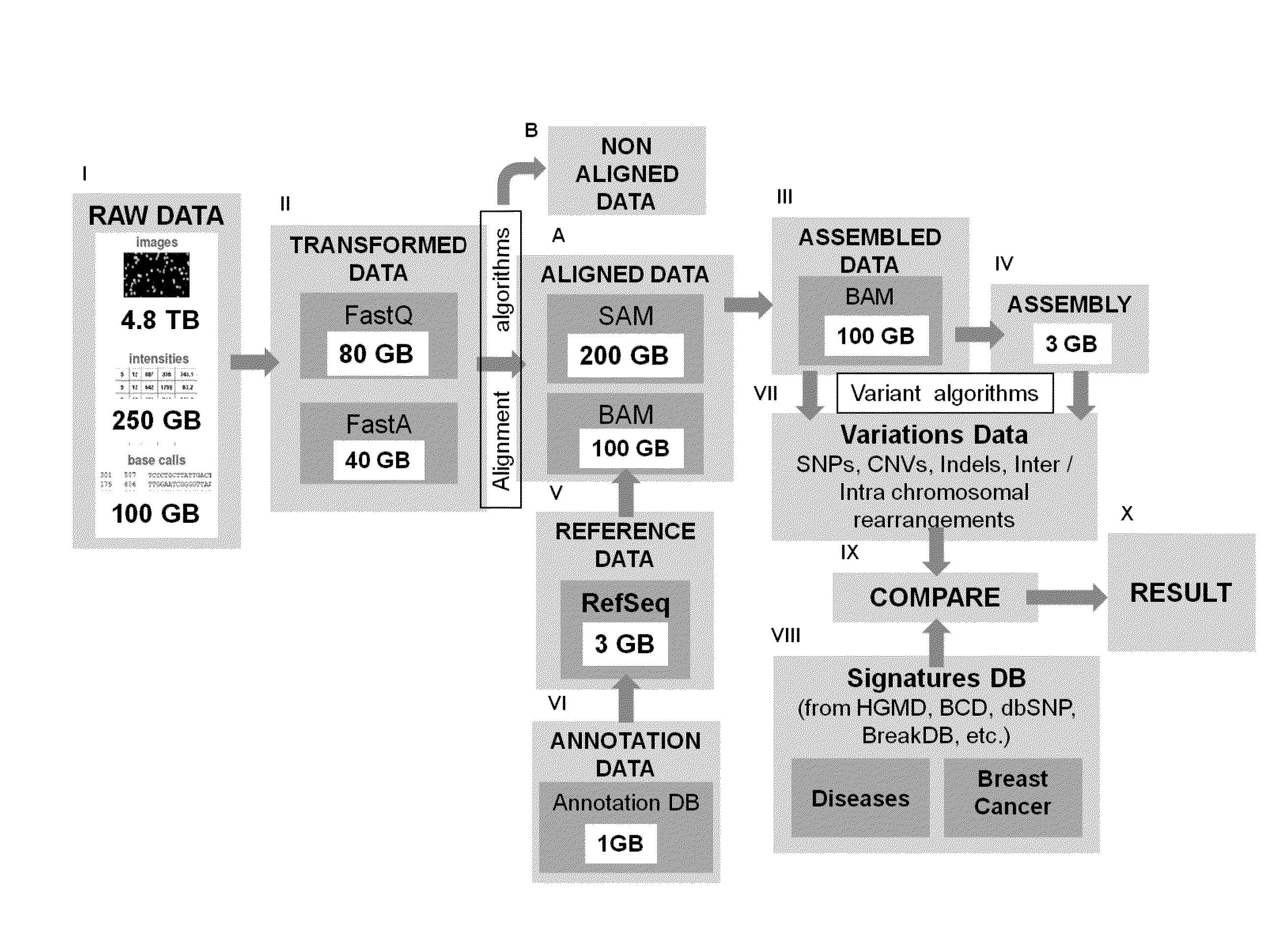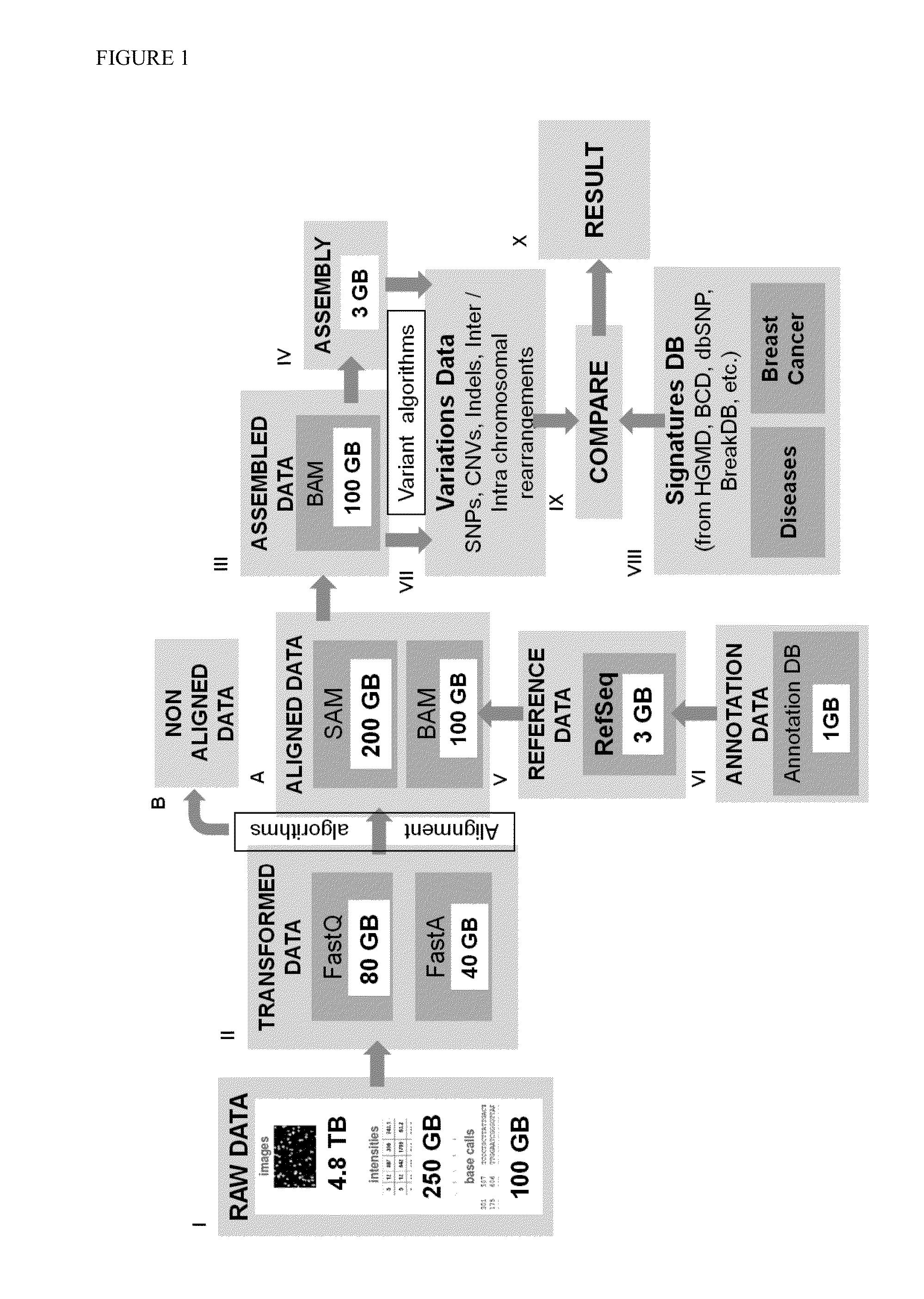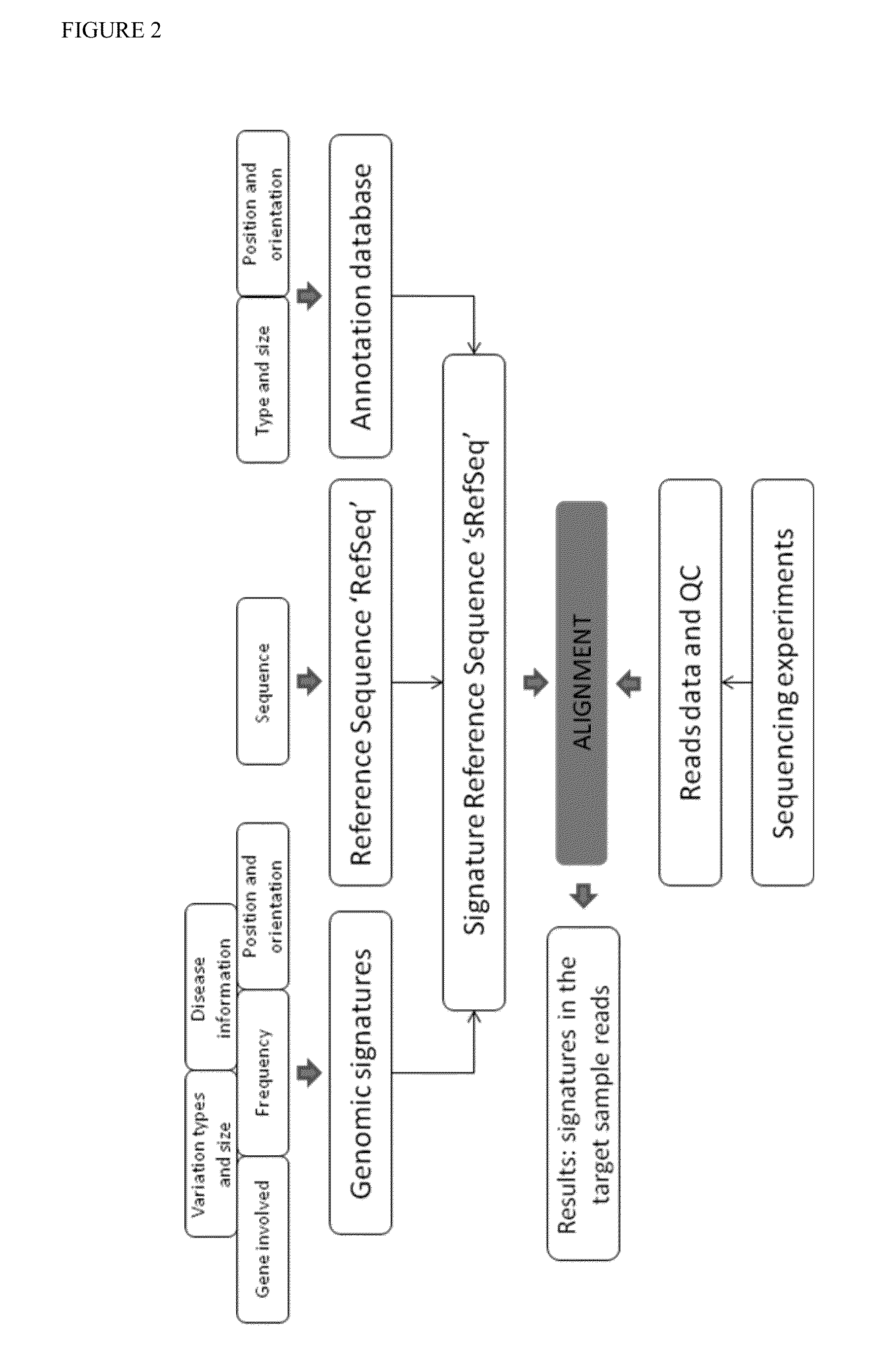Method for processing genomic data
a technology for genomic data and processing methods, applied in the field of processing genomic data, can solve the problems of affecting the professional's diagnostic possibilities, requiring significant storage capacity, and requiring large amounts of genomic sequence data, so as to and reduce the complexity or amount of information.
- Summary
- Abstract
- Description
- Claims
- Application Information
AI Technical Summary
Benefits of technology
Problems solved by technology
Method used
Image
Examples
example 1
Comparison of Alignment Parameters
[0152]A current limit set by alignment algorithms is typically at a maximum of 5 mismatches (e.g. substitution, gap) and a maximum of 3 insertions and deletions. Generally, 2 bp mismatches are used as default input parameters for optimizing the memory / processor usage and running time. Without which the number of targets would blow up with parameters beyond that. However, this is much less than what is required if we a search for larger insertions and deletions is to be carried out. How many reads match and variations called from the RefSeq is directly proportional to input parameters as shown in Table 1. Table 1 shows 11M RNA-Seq reads to mouse chr19 using 2 bp and 3 bp mismatch mapping, respectively. It can accordingly be seen that 3 bp mapping gives 18.5% more uniquely mapped reads and 42% of them fall into transcribed regions annotated by traditional RefSeq genes, which occupies only 2˜3% of the genome.
TABLE 1read alignment to RefSeq with differe...
example 2
Monitoring of a Patient's Response to Therapy Over Time
[0154]The incremental information as obtained according to the methods of the present invention can be used to monitor how a patient is responding to therapy over time (see FIG. 5). The δGs calculated after the patient is put on treatment can be checked to see how quickly he / she is responding to therapy. If the changes are minimal, then the patient has either fully recovered if Gn equals G1 or is not responding well to therapy, in which case an alternate therapy should be employed.
example 3
Prediction of Disease Trends
[0155]The incremental information can also be used to track as well as predict the disease trends which in turn can be used for diagnosis and staging of disease (e.g. cancer). For example, if the δGs of patients (during the diagnosis phase) who have suffered with a particular disease are available, they can be used to detect the key genetic changes during the progression of the disease. This information can be used to detect the early onset of the disease in other patients. Also, they can be used to identify the influence of the genetic makeup of a person on disease progression. For example, in a cancer patient who has a normal profile (see FIG. 6), changes may be detected that diagnose the patient as having colorectal cancer. Going through chemotherapy and radiation therapy may result in a normal profile which is very close to the one before the disease was diagnosed. The values in the matrices could represent levels of RNA signal (gene expression data o...
PUM
 Login to View More
Login to View More Abstract
Description
Claims
Application Information
 Login to View More
Login to View More - R&D
- Intellectual Property
- Life Sciences
- Materials
- Tech Scout
- Unparalleled Data Quality
- Higher Quality Content
- 60% Fewer Hallucinations
Browse by: Latest US Patents, China's latest patents, Technical Efficacy Thesaurus, Application Domain, Technology Topic, Popular Technical Reports.
© 2025 PatSnap. All rights reserved.Legal|Privacy policy|Modern Slavery Act Transparency Statement|Sitemap|About US| Contact US: help@patsnap.com



